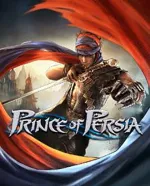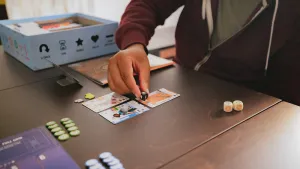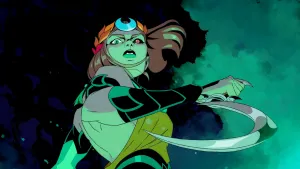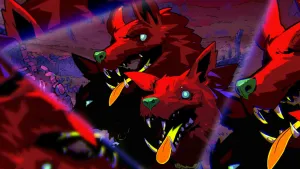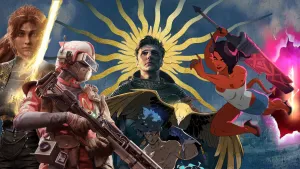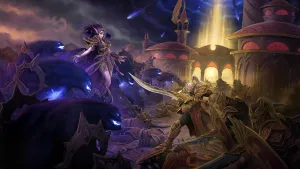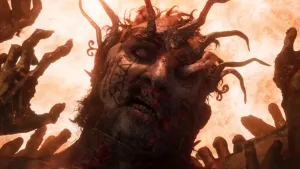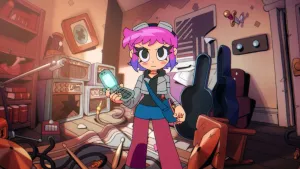Prince of Persia Review
Ubisoft Montreal implemented a wealth of new ideas in this relaunch of Prince of Persia, abandoning many traditions from both the genre and previous Prince games to deliver something fresh. The chief innovations include an evocative art style, freeform approach to gameplay, and a cinematic battle system. The game frequently favors exciting visual displays of acrobatics and combat over tight moment-to-moment controls, which has the potential to frustrate. At its best, the new Prince is a thrilling tale that sweeps you up in its romance, adventure, and fantasy. At its worst, it can feel like a formulaic romp where you're only along for the ride.
The new Prince begins his adventure amidst a blinding sandstorm. Stumbling into a forgotten valley, he's unwillingly dragged into a desperate struggle to prevent the release of an imprisoned dark god. The girl who joins him in this sojourn is his romantic foil, and also a gameplay component fit to replace the sands of time. Elika saves him from deadly drops, weaves magic to aid in battle, and helps traverse the world through spells and special powers. As a constant-companion, she defies the expectation of bad AI-driven partners, and instead feels like a natural extension of the player's will in the game world. More than that, with frequent optional conversations between the two, the game communicates believable affection between the characters...no small feat in this medium
The development team lets you opt out of much of their story and character development, and also set up a structure that lets you tackle the game's levels in any order you wish. As the dark god's corruption spreads across the world, the Prince and Elika must heal discrete areas one by one with her magic, gathering the resulting light spheres to grow Elika's powers and gain access to more levels. As healed lands increase, the corruption becomes more concentrated in the remaining areas, which in turn makes those areas more difficult to traverse. It's a clever design ultimately hurt by its reliance on formula. After enough levels, repetition takes away some of the charm.
Combat has seen a similar level of revision. This game ditches the sprawling multi-enemy fights of the last series in favor of dramatic duels between the Prince and a few repeated bosses. Encouraging the exact opposite of button mashing, these fights hearken back to the timing-based fights of the original Mechner games, rewarding observation and varied attacks. Most any combination of the four attack types results in a unique combo--the trick is figuring out which to use and when to trigger them.
As the developers loosen their control of how you experience the game, they ask a similar sacrifice of the players. It's here that the game's merits will be most heatedly debated. The game is controlled through quick button presses, followed by several seconds of watching the action unfold. This intermittent control feature holds true whether platforming along a crevice or fighting in one of the movie-like duels. It's an elegant and simple way to show off thrilling acrobatics, but it also steals control away from the player. For me, the tradeoff is worthwhile, if unconventional, since the more relaxed control input still demands skill and careful timing.
While the virtues of the control mechanics and gameplay are up for debate, the value of the presentation and production are not. A stirring orchestral score is the perfect accompaniment to the breathtaking environmental backdrops. Stop nearly anywhere in the game, and it looks like you're staring at a still painting. Menus and navigation are equally friendly, and new abilities and skills are well explained and easy to grasp. With its valuation of story and cinematic presentation over player control, Prince of Persia's not a title for everyone. However, it can claim one thing for sure: It's unlike any other game you'll play this year.
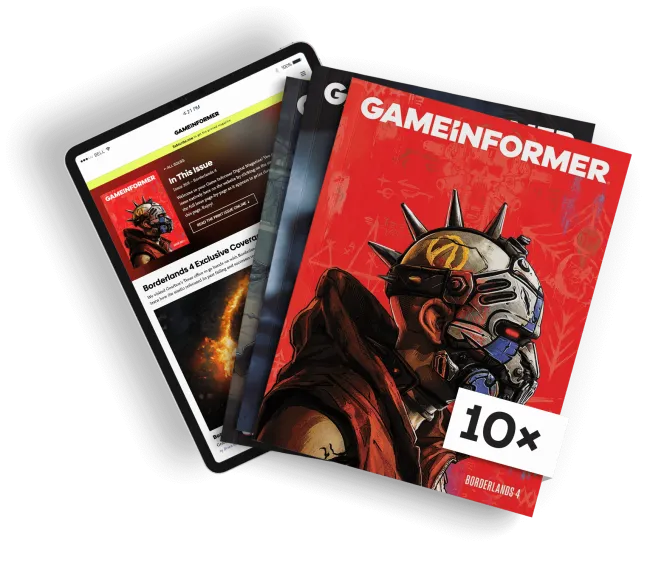
Get the Game Informer Print Edition!
Explore your favorite games in premium print format, delivered to your door.
- 10 issues per year
- Only $4.80 per issue
- Full digital magazine archive access
- Since 1991

